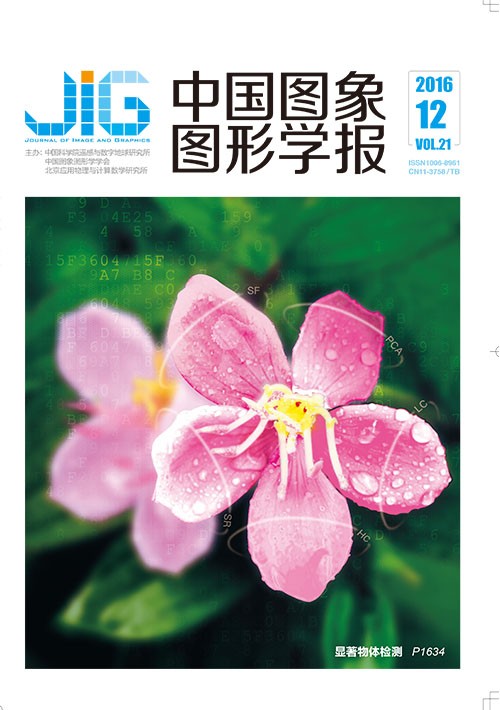
二值化的SIFT特征描述子及图像拼接优化
摘 要
目的 针对SIFT算法计算复杂度高、存储开销大和近几年提出的BRIEF(binary robust independent elementary features)、ORB(oriented BRIEF)、BRISK(binary robust invariant scalable keypoints)和FREAK(fast retina keypoint)等二进制描述子可区分性弱和鲁棒性差的问题,提出基于SIFT的二进制图像局部特征描述子。方法 首先,对传统SIFT的特征空间和特征向量分布在理论和实验上进行分析,在此基础上结合二进制特征描述子的优势对SIFT进行改进。不同于传统的二进制特征描述子,本文算法对传统SIFT特征向量在每一维上的分量进行排序后,以该特征向量的中值作为量化阈值,将高维浮点型SIFT特征向量转化成位向量得到二进制特征描述子。并使用易于计算的汉明距离代替欧氏距离度量特征点间的相似性以提高匹配效率。然后,在匹配阶段将二进制特征描述子分为两部分并分别对其进行匹配,目的是通过初匹配剔除无效匹配特征点来进一步缩短匹配时间。最后,对提出的量化算法的可区分性及鲁棒性进行验证。结果 该量化算法在保持SIFT的较强的鲁棒性和可区分性的同时,达到了低存储、高匹配效率的要求,解决了SIFT算法的计算复杂度高、二进制描述子鲁棒性和可区分性差的问题。此外,在匹配阶段平均剔除了77.5%的无效匹配特征点,减少了RANSAC(random sample consensus)的迭代次数。结论 本文提出的量化算法可用于快速匹配和快速图像拼接中,提高匹配和拼接效率。
关键词
Binary quantized SIFT feature descriptors for optimized image stitching
Li Qian, Jiang Zetao(College of Computer and Information Security, Guilin University of Electronic Technology, Guilin 541004, China) Abstract
Objective A novel binary local feature descriptor based on SIFT is proposed to avoid disadvantages such as high computational cost and large memory cost of SIFT, and low discriminative power and robustness from binary-valued descriptors such as BRIEF, ORB, BRISK, and FREAK. Method Traditional SIFT feature space and distribution of feature vectors are analyzed theoretically and experimentally. Based on the results, the SIFT algorithm is improved by combining the advantages of binary descriptors. Different from traditional binary descriptors, each component of the SIFT feature vector is sorted by magnitude, and median values are selected as quantization thresholds to transform the high-dimensional floating point SIFT feature vector to a bit vector. Similarity between key points is evaluated by the Hamming distance instead of the Euclidean distance to improve matching efficiency. Then, the binary descriptor is divided into two parts that are matched at the matching stage. The purpose is to eliminate invalid matching feature points to further reduce matching time. Extensive experiments on large databases demonstrate the strong discriminative power and robustness of our quantization methods. Result The binary feature descriptor proposed considers low memory cost and high matching efficiency while maintaining the strong discriminative power and robustness. The descriptor proposed solves the computational complexity from SIFT and the low discriminative power and robustness from binary descriptors. Moreover, an average of 77.5% invalid matching key points is eliminated to reduce the number of iterations of RANSAC. Conclusion The proposed quantization algorithm can be used for fast image matching and fast image stitching to improve the efficiency of matching and stitching.
Keywords
SIFT(scale invariant feature transform) binary feature descriptors robustness discriminative power fast image stitching
|



 中国图象图形学报 │ 京ICP备05080539号-4 │ 本系统由
中国图象图形学报 │ 京ICP备05080539号-4 │ 本系统由